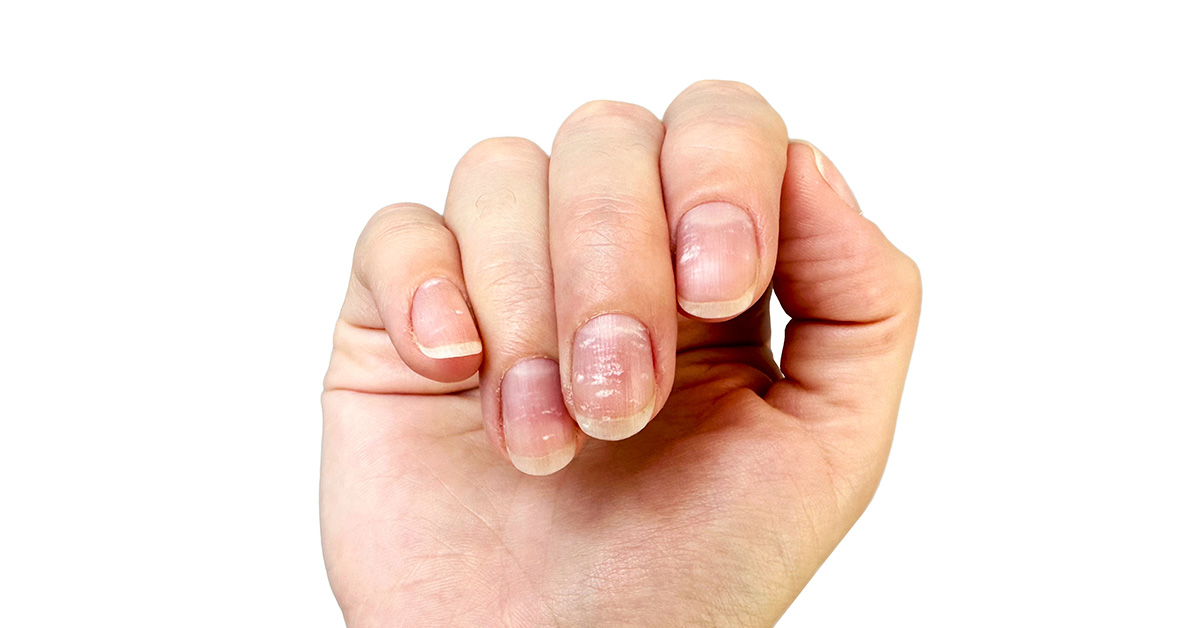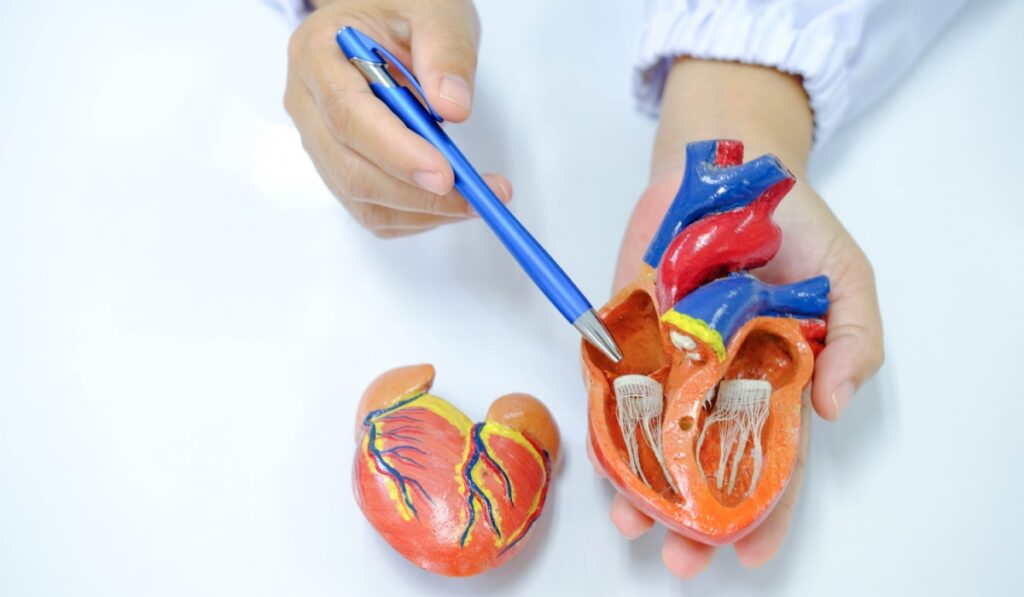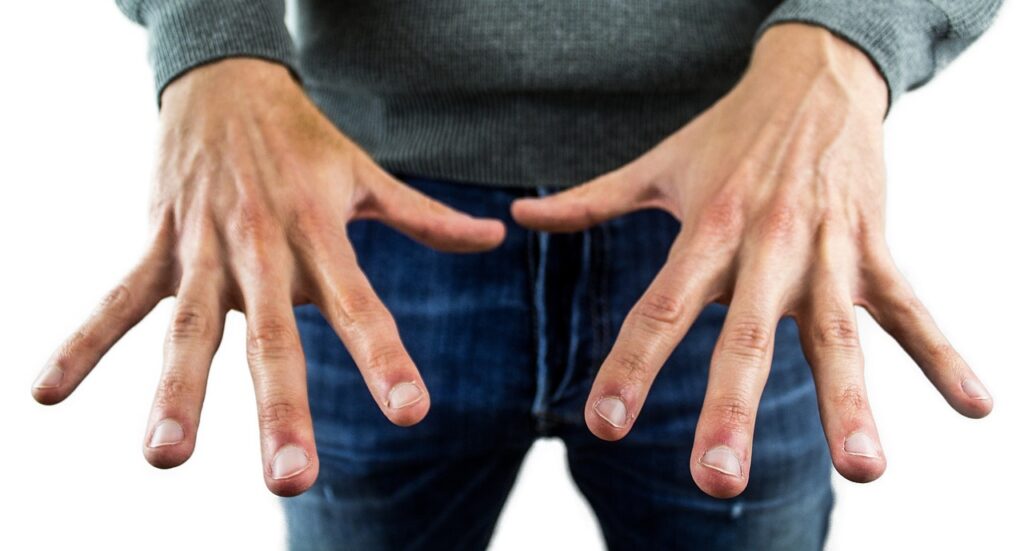Your body displays many subtle signs when you have a serious condition. Dr. Joe, an emergency response medic from the United States, revealed on TikTok that signs of a heart condition can be observed in your fingernails.
According to the doctor, if you press down on your nails and see a red pulsation, you may want to visit your GP as soon as possible.

What Your Fingernails Say About Your Heart Health
This pulsation in the nailbed is from a condition known as aortic regurgitation. The aortic valve is one of the valves that regulate blood flow through your heart. Aortic regurgitation occurs when this valve doesn’t close properly, resulting in blood leaking back into the left ventricle.
Consequently, this chamber holds more blood, causing it to grow larger and thicken. Initially, this larger ventricle helps regulate blood flow with greater force, however, the heart eventually grows weaker.

The Causes of Aortic Valve Regurgitation
Several conditions can cause aortic valve regurgitation. Some babies are born with a bicuspid valve, meaning their aortic valve only has two cusps. It is genetic, so if one of your parents or siblings has a bicuspid valve, then you are more likely to have one too. Another potential cause is aortic stenosis, which is a narrowing of the aortic valve caused by a build-up of calcium deposits.

Endocarditis is a condition wherein the inner lining of the chamber and valves of your heart become inflamed. Usually caused by an infection, this condition can damage your aortic valve. Another potential cause of aortic valve regurgitation is rheumatic fever, a condition that was once common among American children.
Other Potential Causes of Aortic Valve Regurgitation
Several other conditions can make the aorta get bigger and cause damage to the aortic valve, such as Marfan syndrome. Aortic valve regurgitation can also be caused by immune system conditions including lupus. The aorta is the body’s main artery and any traumatic chest injury can potentially damage the aorta, resulting in aortic regurgitation. An aortic dissection (a tear in the aorta’s inner layer), can also lead to an aortic valve regurgitation.
@drjoe_md Quincke’s sign is a physical sign seen in people with aortic regurgitation, a heart condition where blood flows back into the heart instead of moving forward. It shows up as a pulsing in the nail beds when gentle pressure is applied to the fingernail. This happens because the heart’s valves are not working properly, causing stronger pulses in the arteries. It’s one of the clues doctors use to help diagnose this heart issue. #cardiology #aorticvalve #heartmurmur #medicalstudent #medicalresident #premed
Who Is Affected by This Condition
It is a somewhat common condition, with around 1 in every 20 people suffering from some form of it. However, most people don’t experience very severe symptoms, with studies estimating that only around 1 in every 200 people have more serious symptoms. Men between the ages of 40 and 60 were the most commonly diagnosed demographic, with around 1.5 million people in the UK over the age of 65 believed to have some form of it.
The Quincke Fingernail Sign
The Quincke sign is the name given to the capillary pulsations visible upon lightly pressing the tip of the fingernail bed. This sign was named after a physician from Germany who first coined the term in 1868, Dr. Heinrich Quincke. He also contributed to several other noteworthy medical advances, such as identifying the angioedema and his work on the lumbar puncture technique. The Quincke sign results from an increased systolic stroke volume, a widened pulse pressure, and a rapid decrease in pressure in the arteries.

Symptoms of Severe Aortic Regurgitation
Typically, the condition develops over time, with symptoms often not arising for years. However, sometimes it hits suddenly, usually due to a valve infection. As aortic valve regurgitation worsens, symptoms can also include shortness of breath, particularly during exercise or when lying down.
People also experience increased tiredness and weakness, especially after any sort of physical activity. Irregular heartbeats, lightheadedness, or fainting may also occur. Pain or tightness in the chest is also common among patients, especially after exercise. Additionally, as the condition progresses, some people may experience heart palpitations and swelling in the ankles and feet.

When Should You See A Doctor
The Quincke fingernail sign is among more than 30 reported signs of severe aortic regurgitation. If you are experiencing any of the above symptoms, you are advised to book an appointment with your doctor immediately since these are potential signs of a serious heart problem.
Aortic regurgitation diagnosis usually involves undergoing certain tests that measure your heart’s performance, in addition to taking scans that provide insight into its structure. Your treatment will vary depending on the severity of your condition. Patients with milder conditions will likely need to return for regular check-ups, and other patients may be prescribed medications to combat potential side effects.
The Bottom Line on Your Fingernails

There are many signs that may indicate that you have aortic regurgitation. The Quimcke fingernail sign is an easily observable indication as to whether you have this condition or not. If you want to check for Quinckes sign yourself, gently press on your fingernail then release it.
Now observe the nail bed under decent lighting conditions. Look out for rhythmic pulsations or alternating redness and paleness. This could indicate the presence of aortic regurgitation. However, it should not be considered a definitive diagnostic tool, but rather a sign to see your doctor.

